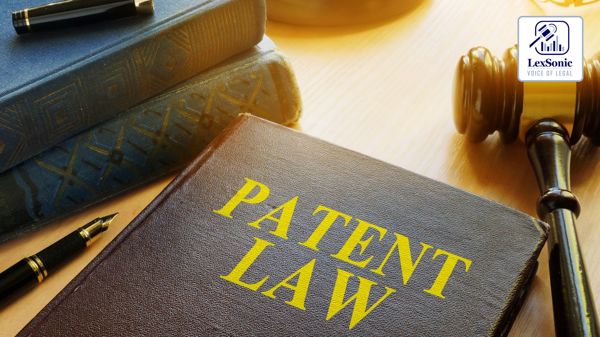When Jurisdiction Collides: Supreme Court Transfers Patent Infringement Suit from Delhi to Bombay.
17 October 2025
Patent Laws in India >> Intellectual Property Rights
In a unique conflict of jurisdictions in relation to rival suits for patent rights on water purifiers, the Supreme Court recently settled the forum conflict between Eureka Forbes Limited and Atomberg Technologies Private Limited by ordering the transfer of a patent infringement action from the Delhi High Court to the Bombay High Court.
The writ of precedence arrived in Transfer Petition (Civil) No. 1983 of 2025, instituted by Atomberg Technologies requesting the transfer of the infringement suit pending against it at the Delhi High Court to Bombay. In a similar vein, Eureka Forbes had instituted Transfer Petition (Civil) No. 2174 of 2025, interceding for the reverse transfer. Both petitions arose from concurrent proceedings between identical parties under the Patents Act, 1970.

Genesis of the Dispute:
Petitioner Atomberg Technologies, a Mumbai-based home and kitchen appliance manufacturer, introduced its new water purifiers under the brand name "Atomberg Intellon" on June 20, 2025. After its introduction, long-time competitor Eureka Forbes allegedly made oral threats to Atomberg distributors and retailers, asserting patent violation and legal action. The threats, Atomberg asserts, produced severe business disruption and fear among its trade associates.
Jumping into action, Atomberg filed a suit under Section 106 of the Patents Act, 1970, in the Bombay High Court on July 1, 2025, for groundless threats of infringement and a restraining order to prevent Eureka Forbes from making such threats.
Soon after, on July 7, 2025, Eureka Forbes also initiated its own patent infringement suit before the Delhi High Court, claiming Atomberg's water purifiers employed its patented features like customizable taste and TDS adjustment mode. Ronch Polymers Pvt. Ltd., Atomberg's contract manufacturer, was accused of having previously collaborated with Eureka Forbes and availed themselves of confidential product information. After buying Atomberg's product online and testing it in Delhi, Eureka Forbes purported to have established infringement and asked for injunctive relief under Sections 104 and 108 of the Patents Act.
The Jurisdictional Tug-of-War:
Both parties went to the Supreme Court asking for transfer of the other's suit. Atomberg requested that the Bombay High Court was the natural forum because:
• Both companies have their registered offices in Mumbai,
• The Bombay suit was filed earlier Delhi filing was the quintessential case of forum shopping, with reliance on internet delivery to Delhi only to invoke jurisdiction, and
•The subject matters in the two suits were largely the same, threatening dual judgments if litigated separately.
Eureka Forbes, on the other hand, objected that the Delhi suit was substantive, dealing with the principal question of infringement, whereas the Bombay suit was ancillary, confining itself to declaratory relief against threats. It believed that territorial jurisdiction was properly invoked in Delhi because the cause of action arose upon the purchase and delivery of the offending product there. In addition, the company alleged that Atomberg's appearance in the Delhi proceedings constituted submission to jurisdiction.
The Court's Analysis:
The Supreme Court, exercising its limited jurisdiction under Section 25 of the Code of Civil Procedure, did not hold that the case with broader ambit should be decided. But it stressed that under Section 106 of the Patents Act, a groundless threats action is a cause of action independent of an action for infringement under Section 104. The Court also drew the attention of courts in general to the historical context of the evolution of the provision, that unlike the repealed Indian Patents and Designs Act, 1911, the 1970 Act deliberately excluded the proviso in that Act which had disallowed such actions if an action for infringement had already been brought.
On reading the record, the Court held that:
- The Bombay suit was filed almost a week before the Delhi suit.
- The Delhi jurisdiction was invoked only by an online purchase and delivery, a weak link.
- The facts and law issues overlapped, rendering parallel proceedings inefficient and susceptible to conflicting findings.
Referring to its order in Chitivalasa Jute Mills v. Jaypee Rewa Cement ((2004) 3 SCC 85), the Court reaffirmed that where parties, issues, and evidence overlap substantially, transfer of proceedings is necessary to avoid duplication and conflicting judgments.
Conclusion and Directions:
In a practical effort at saving judicial time and allowing harmonious adjudication, the Supreme Court granted Atomberg's Transfer Petition (Civil) No. 1983 of 2025 and directed the transfer of the Delhi infringement case to the Bombay High Court, to be heard along with Atomberg's previous suit for groundless threats. Eureka Forbes' identical transfer petition was rejected.
The Court instructed the Bombay High Court to consider and dispose of the pending injunction applications at an early date so that both disputes are determined fully by a single forum.
Significance:
This decision highlights the Supreme Court's ongoing position against forum shopping and its preference for judicial economy in case of concurrent suits based on the same factual scenario. It also reiterates that a suit for groundless threat under Section 106 of the Patents Act has its own footing and pendency thereof can warrant transfer of a subsequently filed infringement action to maintain consistency of decisions.
Essentially, the ruling reiterates that substance will have to overcome form—and where the same controversy is being tried in two High Courts, justice and expediency require consolidation before the more suitable and natural forum.
